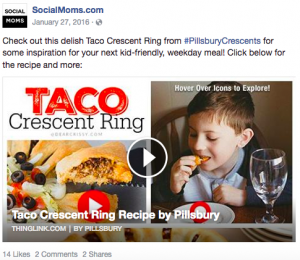By Rachel Foster, Published October 8, 2014

According to new research by the Content Marketing Institute and MarketingProfs, B2B marketers create content for an average of four audiences.
The 2015 B2B Content Marketing: Benchmarks, Budgets and Trends – North America report also states that B2B marketers use an average of 13 different content marketing tactics. This tactics include blogs, e-newsletters, case studies, white papers, videos and more.
The more verticals you have and tactics you use, the harder it is to maintain a consistent voice throughout your content. Earlier this year, I wrote “How to Tell a Consistent Story Across All of Your B2B Marketing Channels“. In this post, I’d like to discuss how to create content for different verticals without losing your brand voice.
Here are five ways you can create compelling content for all your verticals:
1. Don’t just change the keywords.
A marketer from a software company once asked me to write web copy for all his verticals. He said I could write new copy for one page and simply “change the keywords” on the rest of the pages. Unfortunately, it’s not that easy. Each vertical has different needs, problems and interests. I recommended making the copy noticeably different on each page – even though he wanted them to buy the same product.
Readers can tell when you write for the search engines and will ignore anything that fails to speak to their needs. Google is also cracking down on keyword stuffing and asking marketers to focus on creating high-quality content.
2. Conduct a content audit.
Go through your content and determine where you have gaps. Which verticals do you have a lot of content for? Which verticals do you need to create more content for? What types of content will help them take the next step in working with you? For example, do you need to create more blog posts, webinars or case studies for a specific vertical? After you see the results of your content audit, you can prioritize which verticals you want to address next.
3. Segment your blog by vertical.
Many B2B marketers create blog content for just one vertical. If you have more than one key audience, consider tailoring your blog’s content for them. Create new blog categories for each vertical and add targeted posts to your editorial calendar. Then, segment your subscribers and email them relevant posts.
If you have the resources, you can also create different blogs for different audiences. Just be sure that your ROI will be worth the effort of maintaining multiple blogs.
4. Hire a content marketing manager or chief content officer.
Your content marketing manager will ensure that all of your content stays on brand and helps you reach your business goals. He or she will work with your contributors to ensure that every piece of content meets your standards.
5. Create a style guide.
A style guide will help your content team stay on track when they create content for different verticals. The guide can contain buyer personas for people in each of your verticals. It can also specify your desired tone and any messaging that must remain consistent throughout all of your marketing.
A consistent design will also help people recognize your brand – whether they’re viewing a brochure for financial managers or a white paper for IT pros.
3 Ways To Leverage This For Your Business:
1. Read “How to Tell a Consistent Story Across All of Your B2B Marketing Channels” to help you create content that attracts high-quality leads and convert them into customers
2. Download Content Marketing Quick Fixes to learn 10 things you can do improve your B2B content.
3. Click to share this article on Linkedin. Sharing quality content increases your visibility and credibility with your existing contacts, creating conversations and potentially new business.
Business Articles | Business 2 Community
(339)







